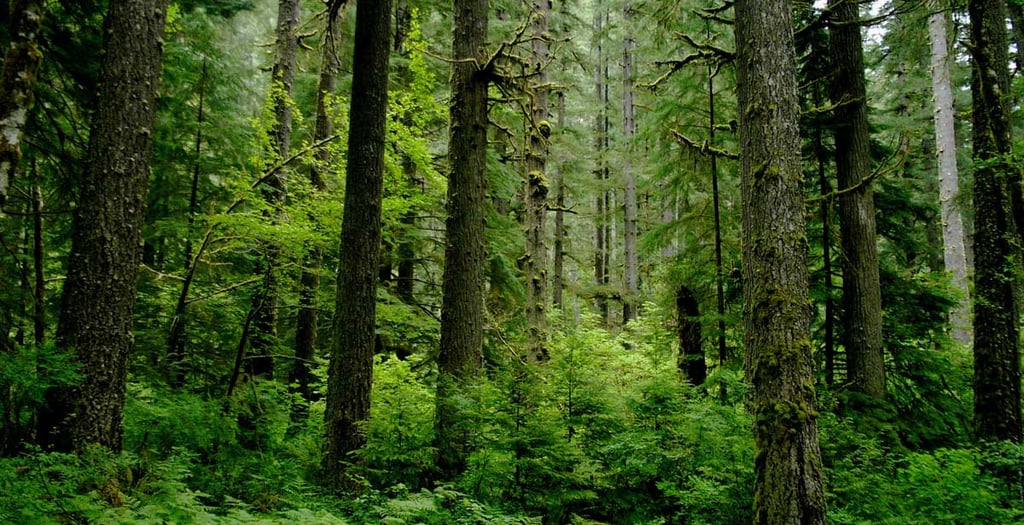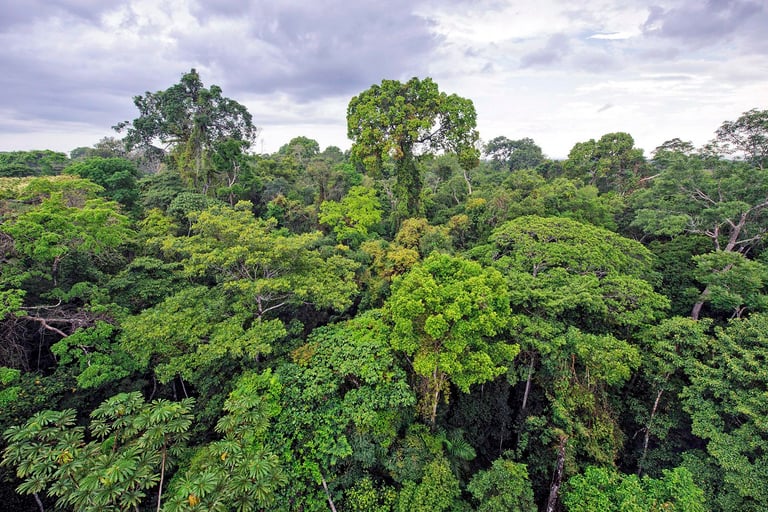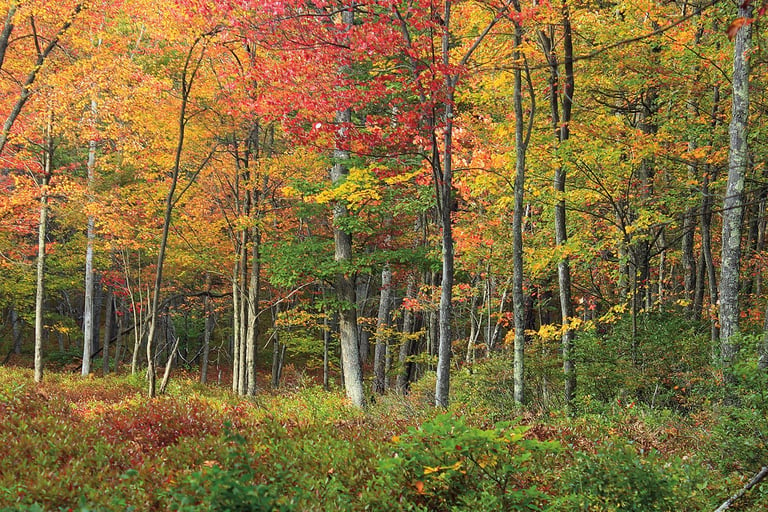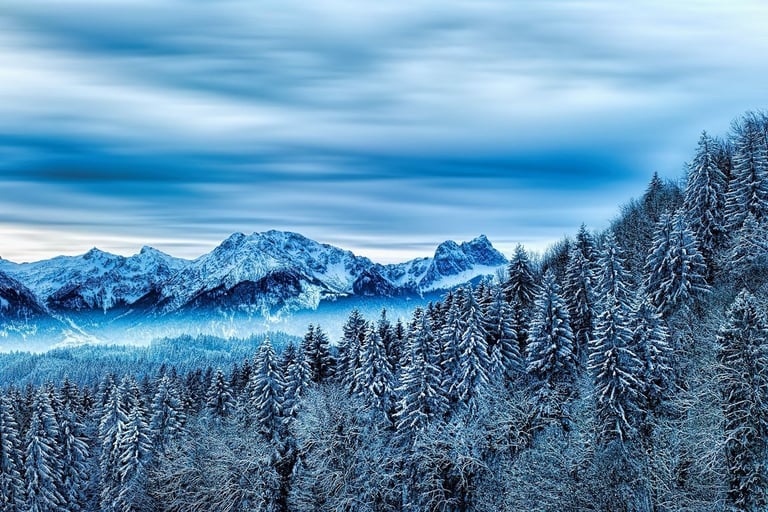Different Types of Forests
ENVIRONMENTAL ISSUES
Danny Xu
6/5/20254 min read


It is easy to just think of a forests as a collection of a bunch of trees, a super green land, and has lots diverse wildlife. However, there are actually three main categories of forests that belong to in different climates and have varying features from one another. Forests are vital to improving the wellbeing of Earth's environment, the amount of plants they contain help reduce the amount of carbon dioxide (a greenhouse gas) in the Earth's atmosphere helping with global warming and they provide a home for many different animals. Therefore, it is important to get an idea of the various forests on Earth.
Tropical Forests
Tropical forests are the forests that found in areas that are mostly warm all throughout the year which are mostly near the Earth's equator like Southeast Asia, South Central America and Africa. The most common type of tropical forests are the rainforests .The Amazon Rainforest is the biggest tropical rain forest in the world. These forests are super humid and moist since not only is the temperature very warm but they also receive a lot of precipitation throughout the year. Tropical rainforests only take up about 6% of Earth's total land but have more than half of the animals and plants in the world. This is a mixture of the warm weather, intense amount of rain, and millions of years of evolution. Many everyday fruits like oranges, grapefruit, bananas, pineapples etc are all grown in these forests. Since so many trees and other plants are able to grow from this combination of warm weather and rain, tropic forests are the a huge contributor to taking in carbon dioxide and helping slow down the effects of global warming.
Interestingly, tropical rain forests have four layers known as emergent, canopy, understory, and floor. As the layers get lower, more and more sunlight is blocked and the organisms that live in there have to learn to adapt to ways to thrive without as much wind to carry seeds and sunlight and precipitation reaching their level. This is because the tall trees have a lot of branches that block a lot of these resources. There are many other types of tropical forests like mangrove and deciduous which also have their interesting features.


Here is a picture of the top layer of a rainforest. Image: https://www.google.com/url?sa=i&url=https%3A%2F%2Fwww.rainforest-alliance.org%2Feveryday-actions%2F9-rainforest-facts-everyone-should-know%2F&psig=AOvVaw3dQ5LDP9VdjwJ6c3tem5ng&ust=1742273726292000&source=images&cd=vfe&opi=89978449&ved=0CBYQjRxqFwoTCKjEwIOqkIwDFQAAAAAdAAAAABAE
Temperature Forests
Temperature forests are located in parts of the world where it has a variation between hot and cold temperatures that correspond with the seasons, cold in winter and hot in summer unlike tropical rainforests which stay warm the whole year. These forests are usually located in USA, Europe and East Asia. Even though they don't grow nearly as tall as rainforests, the trees in temperature forests still get a decent amount of rain and can still reach decent heights of about a seven story building. Temperature forests also contain many different animals though not as diverse as rainforests. Some animals include bears, foxes, wolfs, rabbits, snakes, eagles, moose and many more. Due to the changing weather in this habitat, the animals have also learned how to adapt. Hibernation, migration, and changing coats are all common ways animals have learned to handle the changing weather.


Boreal Forests
Boreal forests are mainly located in China, Japan, Finland, Canada, Norway, Russia, and US. Another name for these forests is "taiga". These forests are usually located at higher ground and are cold for majority of the year having the winter dominate the weather and having snow cover the ground. Pine and spruce are some common types of trees located in these forests. Reindeer, bears, moose, wolverines, snowy owls and many other animals all live in taiga forests.


Sources: Bailey, R. (2019, August 15). What’s It like in a Temperate Forest Land Biome? Treehugger. https://www.treehugger.com/land-biomes-temperate-forests-373499
National Geographic. (2022, May 20). Forest Biome | National Geographic Society. Education.nationalgeographic.org. https://education.nationalgeographic.org/resource/forest-biome/
San Diego zoo. (2019). Tropical Rain Forest | San Diego Zoo Animals & Plants. Sandiegozoo.org. https://animals.sandiegozoo.org/habitats/tropical-rain-forest
Hurt, A. (2016, October 31). Temperate Forest Habitat. Nature. https://kids.nationalgeographic.com/nature/habitats/article/temperate-forest
Research, F. (2014). International Boreal Forest Research Association (IBFRA). International Boreal Forest Research Association (IBFRA). https://www.ibfra.org/about-boreal-forests
Stanley, M. (2022, July 14). Taiga. Education.nationalgeographic.org; National Geographic. https://education.nationalgeographic.org/resource/taiga/
Johnson, H. J. (2023, May 16). Rainforest | National Geographic Society. Education.nationalgeographic.org; National Geographic Society. https://education.nationalgeographic.org/resource/rain-forest/
